Recent Articles
Popular Makes
Body Types
10 Best Small Hybrid Cars

2016 Ford C-Max ・ Photo by Ford
When small hybrid cars first landed on our shores, they were widely perceived to be efficient, yet tinny. That perception of hybrids has stuck, while times have changed. Some of today's most efficient offerings aren’t small cars, by any means, and they're hardly tinny. Smooth riding midsize sedans like the Ford Fusion Hybrid, Chevy Malibu Hybrid, Hyundai Sonata Hybrid, and Kia Optima Hybrid deliver excellent fuel economy and room to stretch out. While Honda has offered three small hybrids over the years, the midsize Accord Hybrid is the only hybrid in the Honda lineup for 2017. The big small-car news for 2017 is the introduction of the Hyundai Ionic, a brand new 5-door hatchback that will be offered as a conventional hybrid, plug-in hybrid, and fully-electric model. But read on for our list of the best small hybrid cars to date.
Toyota Prius
While technically classified as a midsized car, the Toyota Prius is perceived by many as a small hybrid. Physical dimensions aside, the Prius is the reigning giant when it comes to fuel economy. The 2016 Prius Eco is the most efficient trim level, with a positively stunning EPA rating of 58 city/53 highway MPG. All other trim levels are rated at 54 city/50 highway. The Prius is now in its fourth generation and while the exterior design is still polarizing, the car’s ride and handling are light years ahead of earlier models. An upgraded interior and a host of available high-end driver assistance technologies like adaptive cruise control and lane keep assist make the 2016 Toyota Prius a commuter’s dream.
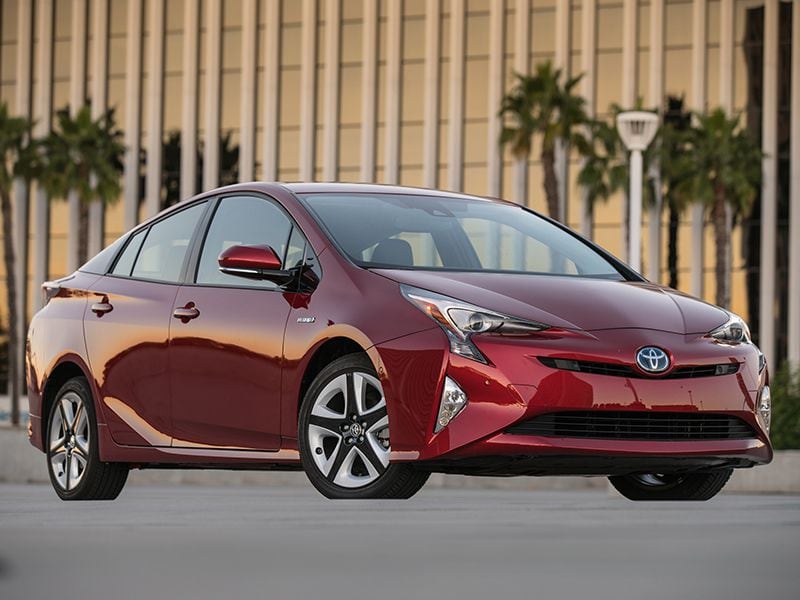
Photo by Toyota
Honda Insight
The first generation (2000-2006) 3-door Honda Insight blazed new ground as a small hybrid fuel sipper. This sleek little 2-seat hatchback topped the fuel economy charts in 2000, with a mind-boggling EPA fuel economy rating of 49 city/61 highway miles per gallon. Advanced aerodynamics produced a magnificently low drag coefficient of just 0.25. The original Insight was offered with a manual or CVT automatic transmission. The second generation (2008-2014) 5-door Insight was perceived by many as a reaction to the highly popular Toyota Prius. While it was smaller and less expensive than the Prius, the second gen Insight fell a bit short on MPGs (41 city/44 highway) and was never a big seller, as it faced competition on its own showroom floor from the Civic Hybrid and CR-Z.
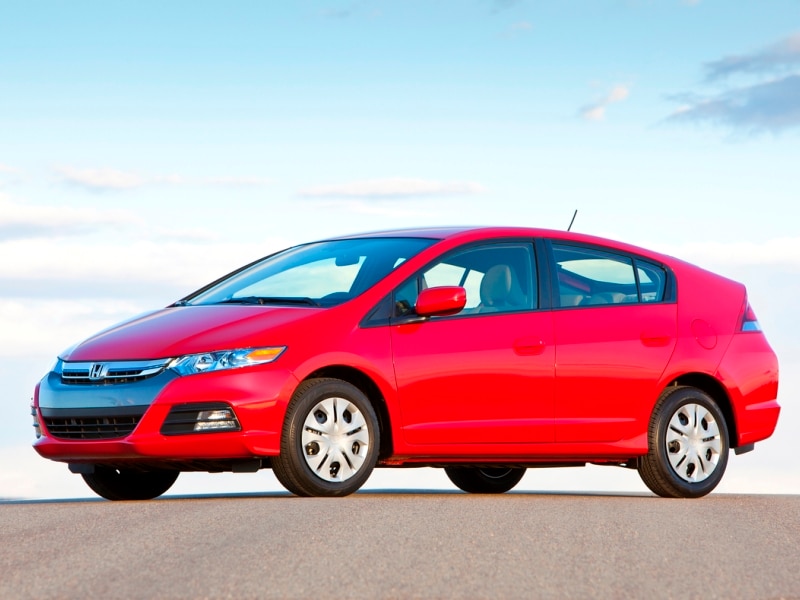
Photo by Honda
Ford C-Max
The 5-door C-Max hatchback may be Ford’s smallest hybrid, but it maximizes interior space with a tall roofline. Based on the Ford Focus platform, the C-Max is offered as a conventional hybrid, and as a plug-in hybrid, dubbed the C-Max Energi. The conventional C-Max hybrid has an EPA fuel economy rating of 42 city/37 highway MPG, while the C-Max Energi is rated at 88 MPGe (utilizing the plug-in battery pack) and 38 MPG combined on gasoline. While both versions are surprisingly peppy, roomy and fun to drive, the C-Max Energi’s smooth electric power delivery enhances the experience. Factory and government incentives make it a compelling choice. You’ll want to test drive the two versions back-to-back to experience the difference.
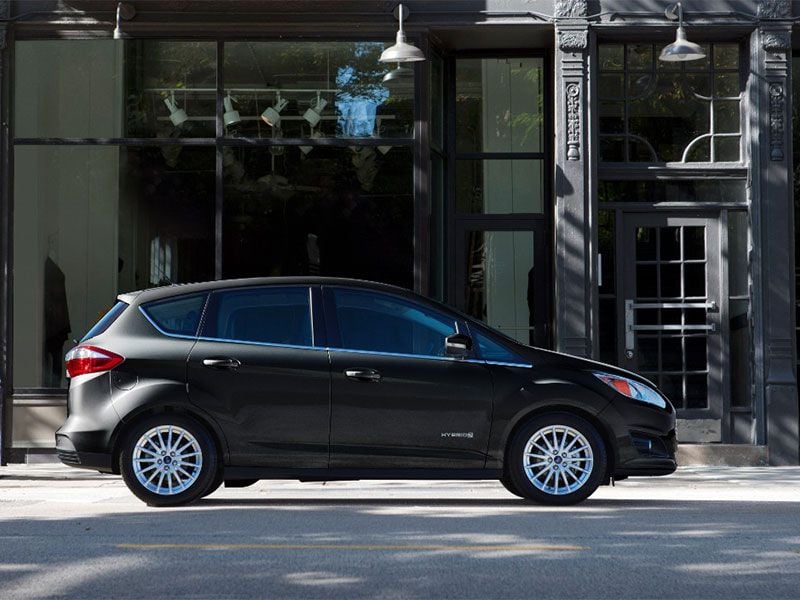
Photo by Ford
Chevrolet Volt
While the Chevrolet Volt isn’t technically a hybrid, as Chevy prefers to refer to it as an “extended-range” electric vehicle, it earns a glowing mention on our list of small hybrids. The Volt burst onto the scene in the 2011 model year and the second generation 2016 Volt crackles with a sleek new exterior and significantly refined cabin. Regardless of factory nomenclature, the EPA classifies the Volt as a plug-in hybrid, with a rating of 106 MPGe with a fully charged battery and 42 MPG combined while running purely on gasoline. Fill the 2016 Volt’s battery up overnight on house current and you’ll have 53 miles of pure electric range. If you’re in the market for a thrifty small hybrid, the 2016 Volt is a must drive.
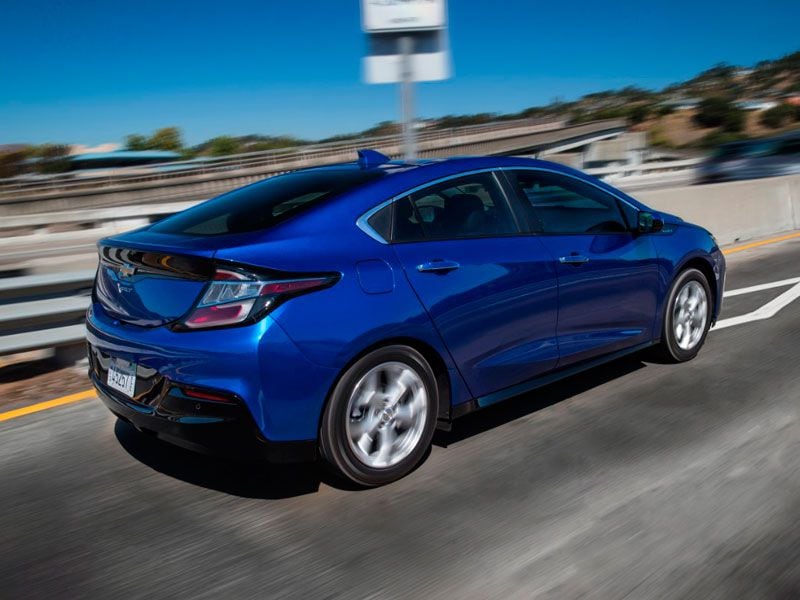
Photo by Ford
Honda CR-Z
The 3-door Honda CR-Z sport hybrid drew its inspiration from Honda’s legendary CR-X 2-seat sports hatch and the original Insight hybrid. While Honda’s small hybrid 2-seater never sold in huge numbers over its run from the 2011 through the 2016 model years, it filled a niche that no other automaker dared to enter. Alas, the CR-Z drew criticism from both sides, as it was neither fast enough for the boy racers nor acceptable fuel efficient (at 36 city/39 highway MPG) for the economy-minded. Never mind the haters, the CR-Z had undeniable street presence, channeling the design of the original CR-X, along with a manual transmission, making it a uniquely cool small hybrid.
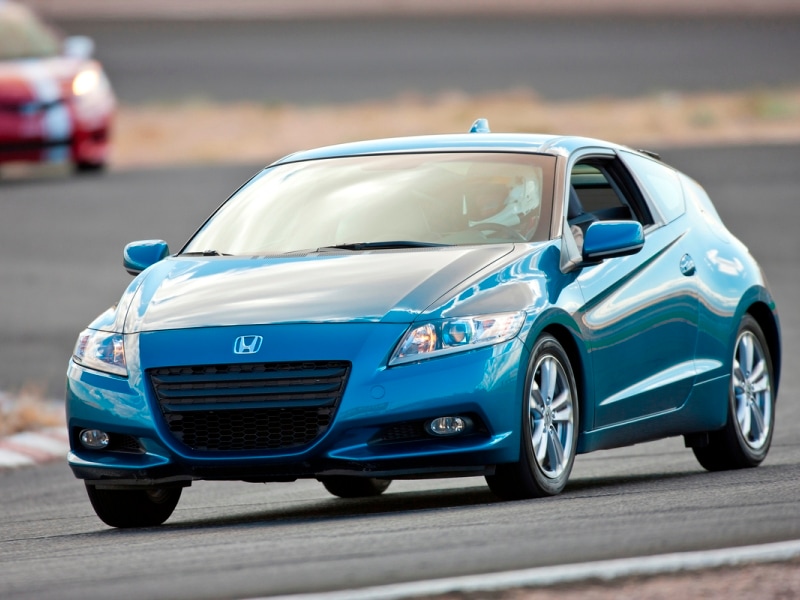
Photo by Honda
Lexus CT200
The 5-door Lexus CT200h compact is one of the most luxurious hatchbacks on our list of small hybrids and carries an official EPA fuel economy rating of 43 city/40 highway MPG. The CT200h first hit American streets in 2011 and was refreshed for the 2014 model year, incorporating the hallmark Lexus spindle grille and styling cues. The CT200h rides and handles well, and benefits from a splendid interior, particularly in F-Sport trim. While acceleration is lackluster and the back seat a bit tight, the upholstery is lovely, the seats supportive, and the flat-bottom steering wheel screams Speed Racer. Small luxury hybrid hatchbacks are still uncommon and the CT200h’s fiercest rival is the sleek Audi A3 Sportback e-tron.
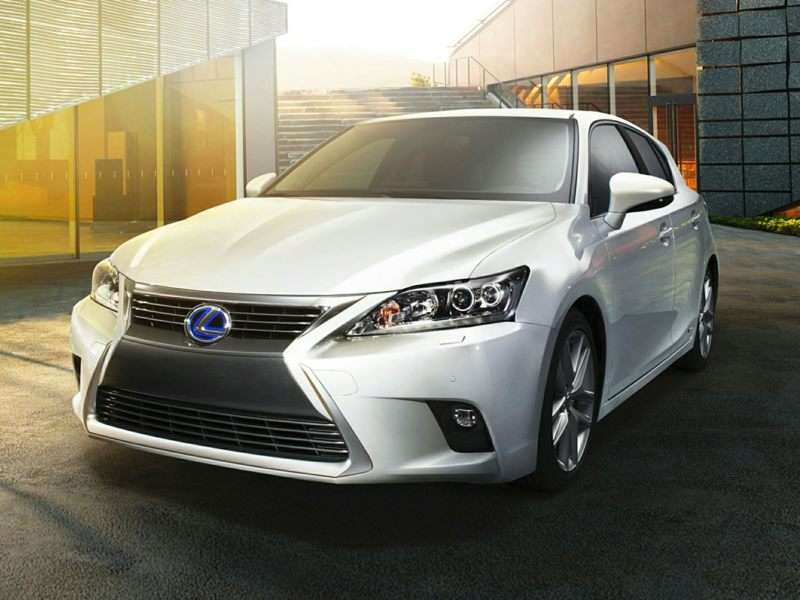
Photo by Lexus
Audi A3 Sportback e-tron
What do you get when you marry an 8.8-kWh lithium-ion battery pack and hybrid drivetrain with Audi’s splendid A3 5-door? A luxurious fuel-sipping, grocery-hauling, small plug-in hybrid hatch that covers the 0-60 MPH sprint in a very respectable 7.6 seconds. The e-tron ultra is EPA rated at 86 MPGe combined with a fully charged battery pack and 39 MPG combined when running on premium gasoline. Available safety technology includes stop-and-go adaptive cruise control (0-95 MPH) with front pre-sense, active lane keep assist, and Audi side assist (lane change assistant). Choices are limited in this niche. If you’re in the market for a sporty hybrid hatchback, it’s either the e-tron or the Lexus 200h.
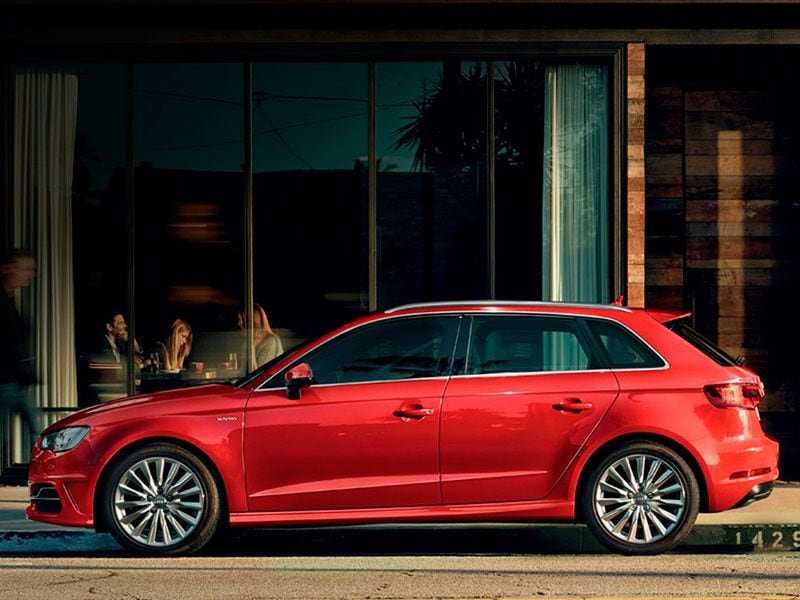
Photo by Audi
BMW i3 REX
The BMW i3 is one of the most intriguing fuel-efficient small cars available today, but isn’t a hybrid per se. Technically, it’s an electric car, with an available range extender (REX). The i3’s 22kWh lithium-ion battery pack provides 81 miles of pure electric range, while the optional premium gasoline powered generator allows for a total range of 150 miles. The EPA rates the i3 REX at 117 MPGe with the battery pack fully charged and 39 MPG while running on the REX. The i3’s polarizing design and carbon fiber reinforced plastic construction technology differentiate it from everything else on the road today. To some, it’s a magnificent feat of engineering. To others, a bizarre moon buggy. Put me in the first camp. Driving the i3 is a hoot.
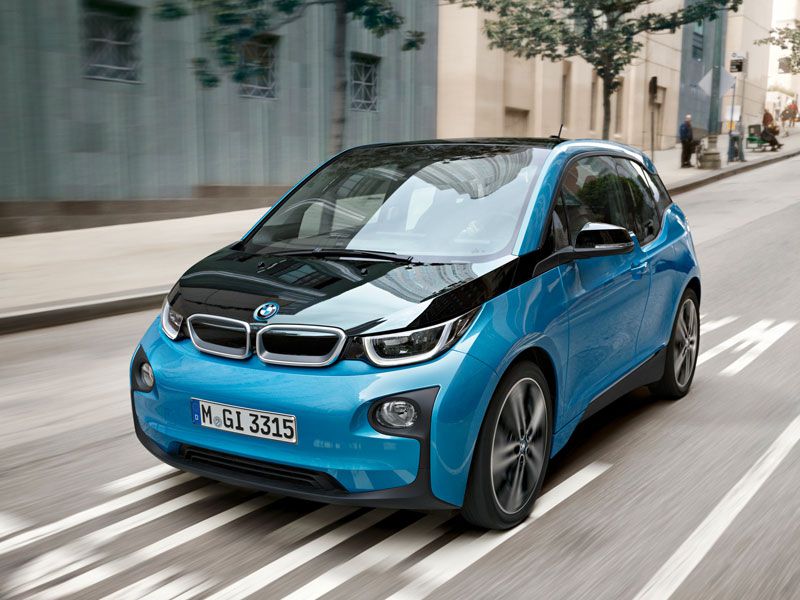
Photo by BMW
Toyota Prius c
The 5-door Toyota Prius c hatchback is the tiniest member of the Prius family and one of the smallest hybrids sold in America. It’s based on the Toyota Yaris platform and is marketed as the Yaris Hybrid overseas. The Prius c is remarkably thrifty, with an EPA rating 53 city/46 highway. It was America’s most fuel-efficient hybrid without a plug when it debuted in the 2012 model year and held that honor until the introduction of the 2016 Prius Eco. If you’re looking for a subcompact hybrid with the highest level of fuel efficiency, the Prius c is the e-ticket. While it’s not fast, it handles well, is fun to drive, and easily fits into tight spaces.
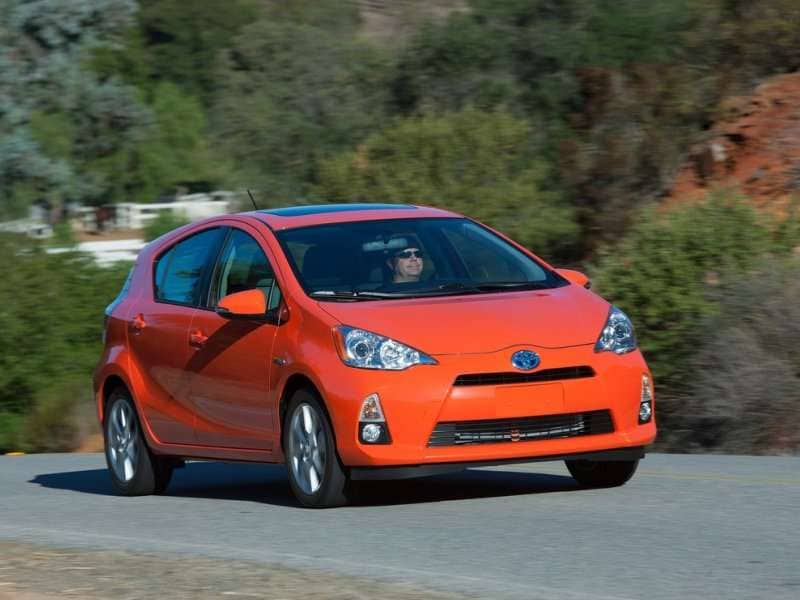
Photo by Toyota
BMW 330e
The 2016 BMW 330e sedan is one of the largest and most luxurious entries on our list of small hybrids. The 330e is a stealthy plug-in hybrid, capable of driving over 15 electric miles on its lithium-ion battery pack, before switching over to conventional hybrid operation. The EPA graces the 330e with a fuel economy rating of 72 MPGe combined, taking a fully charged battery pack into account. In conventional hybrid mode (once the battery has been depleted), it’s rated at 31 MPG combined. This is a BMW, of course, so it’s not about thrift. Ride and handling are splendid and the drive train is quite sprightly, with a factory-rated 0-60 MPH time of 5.9 seconds, dispelling the notion that all hybrids are slow.
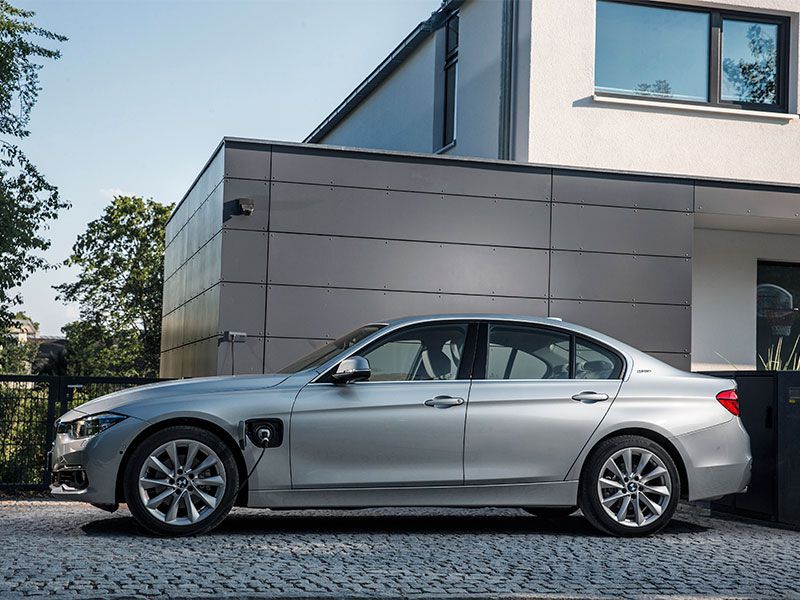
Photo by BMW